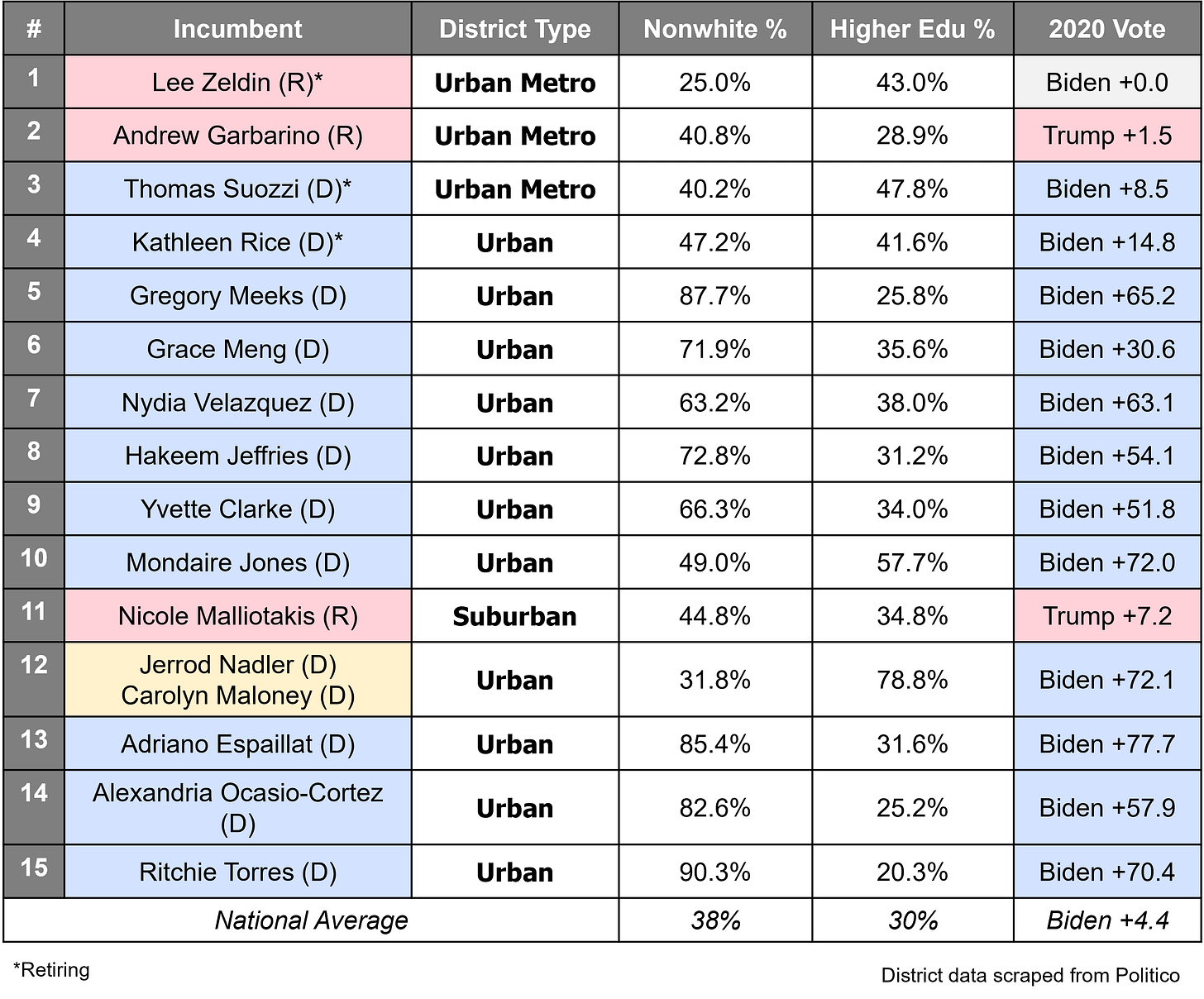New York: Democrats Draw Their Own Drama, Not Districts
Redistricting drama surrounding Democrats in New York is largely of their own making.

Topline Takeaways
New York’s redistricting was first controlled by a bipartisan advisory commission, then the legislature, and were finally drawn by a “special master” appointed by state courts.
The legislature’s enacted map was struck down for extreme partisan gerrymandering, forcing districts to be redrawn by a “special master.”
The enacted map gives Democrats a slight edge in upstate NY and protects the few Republican districts around NYC that Dems tried to draw away.
Who’s In Control?
Over the past decade, the New York legislature has been doing the slow work of introducing a state constitutional amendment that would implement a 10-member advisory commission for redistricting. (The state legislature must vote to approve the proposal twice across two different legislative sessions before holding a public vote and enacting it into law.) The legislature successfully completed this process in time for the 2020 redistricting cycle which meant that New York’s redistricting was first controlled by a bipartisan commission.
However, this commission was ineffectual as after two failed attempts at passing maps, the duty would then fall into the hands of the legislature. As a result, the Democratic-led legislature gave the pen to themselves by swiftly rejecting both of the commission’s two proposals. They then drew new districts that were infamously derided as some of the worst gerrymanders this cycle. That map was struck down by the New York Court of Appeals for partisan gerrymandering as it would have given Democrats a startling 22 seats tilting in their favor, leaving just four seats for Republicans. The ruling then passed the pen to a “special master” appointed by the state courts to draw a fairer map.
New District Breakdown
The enacted map adds no new Republican districts (safe or swing) and flips one of those GOP districts into a new swing district (NY-1). On the Democratic side, it adds no new Democratic districts and only brings one previously safe Dem-leaning district (NY-3) into swing territory. Altogether, the new map simplifies some district boundaries in New York City and pulls both sides toward more competitive races in a few districts. Much of the drama surrounding the new map isn’t from voters, it’s mostly the Democratic incumbents who are unhappy with their new districts.
The easiest district to nitpick is the choice to draw NY-12 so that incumbent Reps. Jerry Nadler and Carolyn Maloney are forced into a primary against one another. For decades, the Upper West Side and Upper East Side of NYC anchored their own individual districts, represented by Nadler and Maloney respectively. The new NY-12 bucks historical patterns and wraps the two upper halves of Manhattan into a single district that both Maloney and Nadler want to hold on to. This move to pit incumbents against each other doesn’t quite sting as much when learning that Upstate Republicans would have faced a similar choice between their own incumbents with Republican Reps. Tom Reed and Chris Jacobs drawn into the same district as well. (Tom Reed recently announced his resignation from Congress due to sexual assault allegations, make things much simpler for Rep. Chris Jacobs.)
Democrats have ginned up drama elsewhere in the state due to their lack of communication over who’s running in which new district. Incumbent Rep. Sean Patrick Maloney is the chair of the Democratic Congressional Campaign Committee and he decided to run in the new NY-17. He made this decision this without telling the incumbent who currently represents most of the voters of the new district: Rep. Mondaire Jones. This put Jones in the awkward position of running against one of the most prominent national Democrats or running against fellow Black House freshman Jamaal Bowman in neighboring NY-16. Instead, Jones has decided to run in an entirely new, open district: NY-10.
The rift between the candidates has continued to widen and is symbolic of the struggle between the whiter moderate wing of the party and the more racially diverse progressive wing. Rumors have circulated that Maloney’s campaign felt that Jones would be “ideologically better suited for a different district.” Fellow New York Incumbent House Rep. Ritchie Torres wasn’t afraid to say the quiet part out loud after hearing of Maloney’s treatment of Jones:


Let’s be unequivocally clear about how Democrats are creating their own drama in New York. Over the past 3 House elections on average, New York House Democratic candidates garnered roughly 63% of the total House votes cast. Translating that to House seats means that a fair map would net Democrats about 17 seats or 65% of the state’s 26 seat delegation. That means the enacted map above passed by the special master already leans in favor of Democrats by 3 seats more than a truly “fair” map would (primarily because it’s almost impossible to draw geographically compact districts in/around NYC that would lean Republican). So let that sink in: the Democratic party is throwing a tantrum because they didn’t get the unfair partisan advantage that they wanted. (The cognitive dissonance is deafening.)




